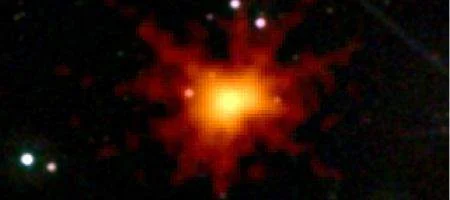The most powerful X-ray blast ever detected from deep space temporarily blinded NASA’s Swift space observatory last month.

The X-rays traveled through space for five billion years before slamming into and overwhelming Swift’s X-ray Telescope on 21 June. The blast came from a gamma-ray burst, a violent eruption of energy caused by a massive star collapsing into a black hole.
“This gamma-ray burst is by far the brightest light source ever seen in X-ray wavelengths at cosmological distances,” said David Burrows, senior scientist and professor of astronomy and astrophysics at Penn State University and the lead scientist for Swift’s X-ray Telescope (XRT).
Although the Swift satellite was designed specifically to study gamma-ray bursts, it wasn’t made to handle an X-ray blast this bright.
“The burst was so bright when it first erupted that our data-analysis software shut down,” said Phil Evans, a postdoctoral research assistant at the University of Leicester in the United Kingdom who wrote parts of Swift’s X-ray-analysis software.
“So many photons were bombarding the detector each second that it just couldn’t count them quickly enough. It was like trying to use a rain gauge and a bucket to measure the flow rate of a tsunami.”
The software soon resumed capturing the evolution of the burst over time, and Evans recovered the data that Swift had detected during the software’s brief shutdown.
The scientists then were able to measure the blast’s X-ray brightness at 143,000 X-ray photons per second during its period of greatest brightness.
“The correction factor for the X-rays from GRB 100621A was 168 times larger than for a typical gamma-ray burst and five times larger than for the brightest burst we previously had seen. We never thought we’d see anything this bright,” said David Burrows, lead scientist for the X-ray Telescope.






